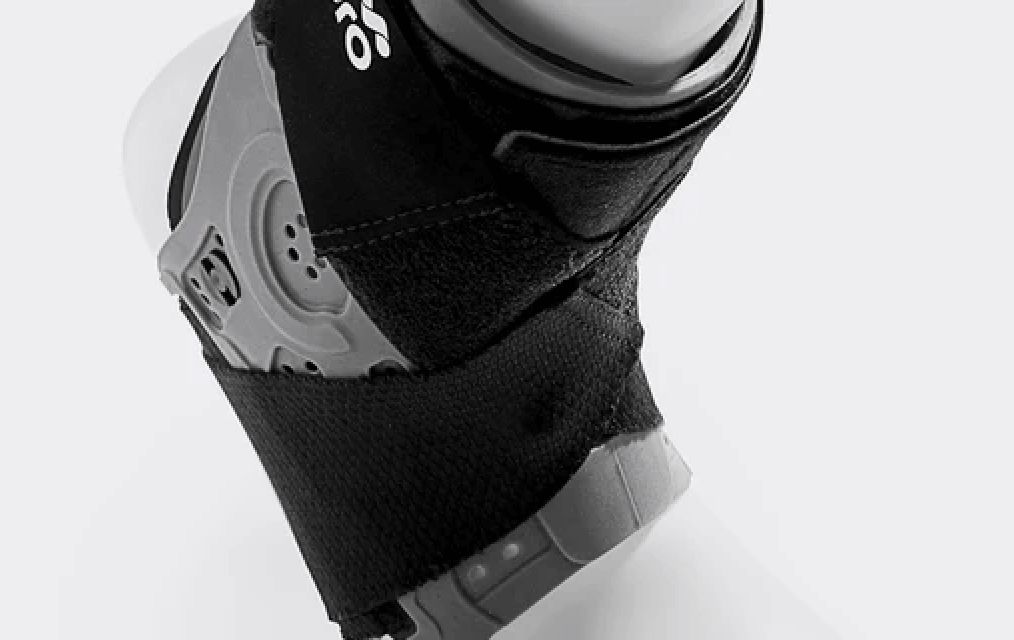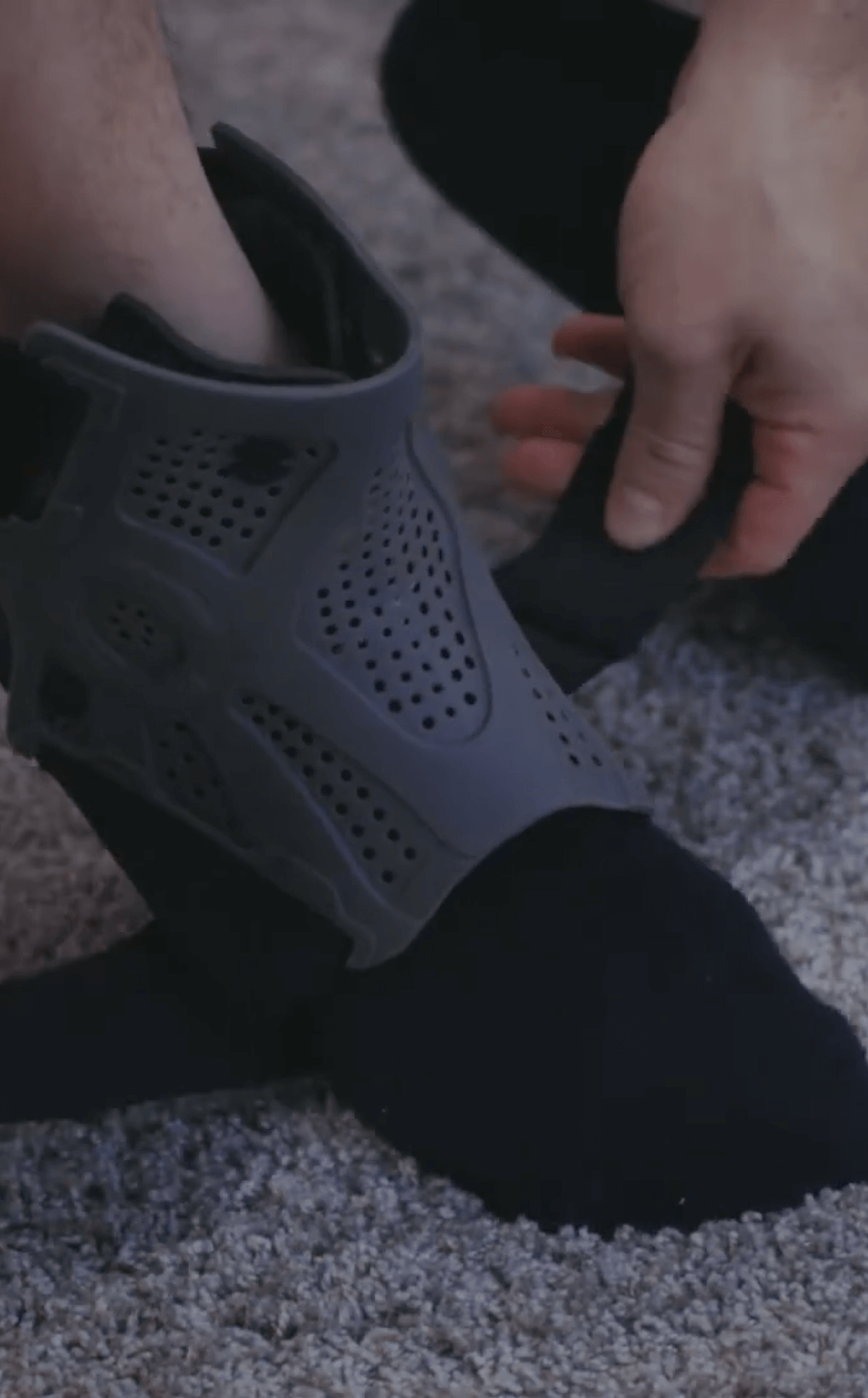
Common Symptoms of Achilles Tendonitis
The common symptoms of Achilles tendonitis are
- Pain and stiffness in the area in the morning
- Pain in the heel and along the length of the tendon while you walk or run
- Swelling in the heel or along the length of the tendon
- Pain in the region when moved or touched
- Difficulty standing on one toe
Even if you experience these symptoms, it is recommended that you consult a doctor to confirm that you have Achilles tendonitis.








The Vero Ankle™ Brace for Achilles Tendonitis

Achilles tendonitis can cause disruption to your day-to-day activities as the pain can often become unbearable. At Vero Ankle™, we have a specially designed Achilles tendonitis brace that helps you reduce the swelling of the area through compression and speeds up the recovery process. Our Achilles tendon support brace reduces the stress placed on the tendon by offering a combination of heel lifts and compression.
Our ankle wrap for Achilles pain improves your mobility by reducing the pain and providing enough support to your heel and tendon region. Moreover, the velcro straps on our ankle brace for Achilles tendonitis let you adjust the grip as per your liking, ensuring the braces are not too tight.

Achilles Tendonitis
The Achilles tendon is a fibrous cord in our body that connects muscles in the back of our claves to our heel bones. The overstretching of the Achilles tendon may cause irritation or inflammation of the tendon and may also lead to tearing of the tendon.
What is it?
Achilles tendonitis is a medical condition that occurs when the tendon connecting the back of your leg to your heels swells up and becomes painful near the bottom of your foot. Even though this condition is more common in athletes, non-athletes may also develop it if their Achilles tendons are overstretched on a regular basis.
Why do I have it?
If you have Achilles tendonitis, it may be because your Achilles tendon has been overstretched significantly in the recent past. It may have happened during any sport or athletic activity when you suddenly increase the intensity or duration of the exercise.
When does it hurt?
You may experience pain at the back of your leg or above the heel due to Achilles tendonitis after running or playing a sport (such as volleyball, basketball, soccer, etc.). You may experience severe pain due to this condition if you run for prolonged periods, climb stairs, or sprint.

Universal Design
Fits both left and right feet of all shapes and sizes
BioMemory™ Material
Returns to original shape with every movement
Elastomeric Boot
Stretches under tension and offers a snug fit
Breathable
Perforated boot to keep the foot cool and sweat-free
Dynamic Stability
Keeps ankle joints stable and safe during activities
Enhanced Performance
Stores and releases energy for an extra boost
Low Profile
Fits inside shoes and cleats without any hassle
Adjustable Support
Add or remove stirrups as per your support needs
EASY ON, EASY OFF
Our simple velcro strapping system allows you to adjust your fit on the fly. No more knots or spaghetti laces.

FLEXIBLE MATERIAL
The perfect balance between support and mobility. BioMemoryTM material keeps you protected while staying active

MODULAR DESIGN
A single brace for each stage of recovery. Add or remove the padded inserts depend-ing on the level of support you need

FITTING
INSTRUCTIONS
Watch the video
Frequently Asked Questions
Do ankle braces help with Achilles Tendonitis?
According to medical experts, compression can help reduce the swelling of the area due to Achilles Tendonitis. Ankle braces help support one’s Achilles tendon and reduce the risk of recurrence of the condition. You can use Vero Ankle™ braces to give support to the Achilles tendon and provide much-needed compression to reduce inflammation.
How do I know if the brace is too tight?
While wearing an Achilles tendon brace, you need to make sure that the brace is comfortably tight. It should feel compressive through the foot and ankle. However, it should not be too tight that it cuts off circulation or causes other types of pain or discomfort. With the swelling in the foot or ankle, the tight fit can cause more harm than good.
How does an Achilles tendon injury occur?
There are several possible ways in which your Achilles tendon can get injured. The most common ways are:
- Starting a new sport that requires fast movement of the feet or jumps
- Performing high-intensity activities
- Tight calf muscles when beginning an exercise
- Bone spurs on your heel, which may rub against your tendon
If you feel pain above your heel, especially when you stand on your toes or stretch your ankle, it may be a sign of Achilles tendon injury.
Which exercises help against an Achilles tendon injury?
When you are suffering from an Achilles tendon injury, you can perform the following exercises to help against the injury:
- Calf raises
- Manual resistance exercises
- Ankle exercises with a resistance band
- Straight leg raises
- Short arc quad sets
Apart from these exercises, you may also need physical therapy to recover from the injury.






